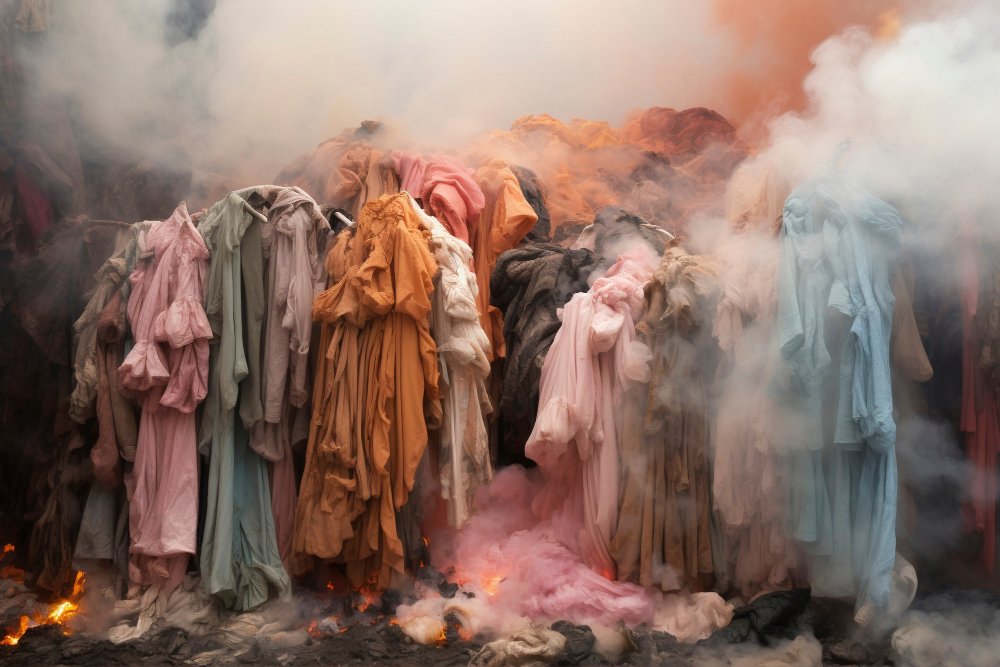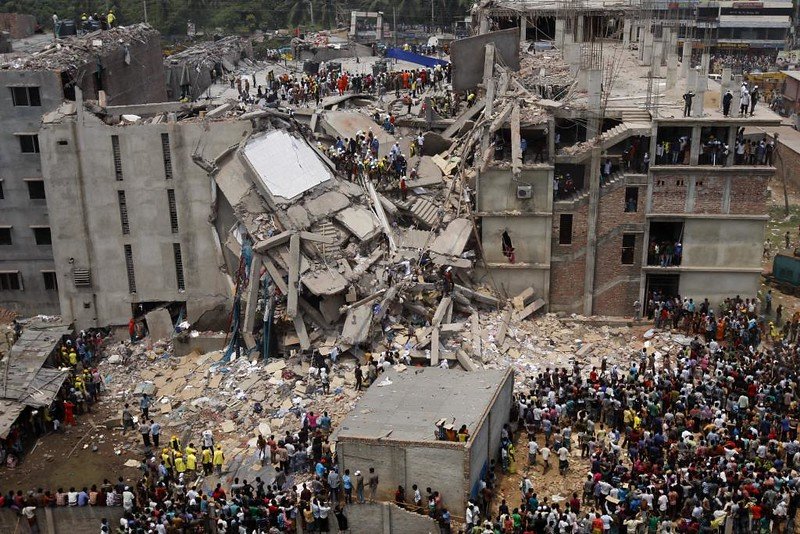When greenwashing meets fast fashion, a perfect disaster
8 min de lecture

Eleven years ago today, a fatal accident occurred in Dhaka, Bangladesh. On 24th April 2013, the so-called Rana Plaza, a garment factory, collapsed and 1134 workers died. Many more got injured. This terrible disaster put the fast fashion industry and its production methods into the spotlight for the first time.
After the collapse of the 8-story building, horrific scenes of the crumbled structure, dead bodies and amputated limbs went around the world leaving consumers in the global North in shock. Was this the place where people’s favourite brands are produced? Yes, this was a reality, and it still is. Fast fashion comes at a price, both from an environmental and social point of view.
What is fast fashion and why is it so problematic?
Some 50 years ago, throughout a given year 2 to 4 seasonal collections were launched. In the early 2000s brands such as H&M or Zara started a revolutionary trend of offering new collections every few months!
“Believe it or not, SHEIN adds new clothes to its website every day! Yes, you read that right – every single day! This means that fashion lovers can find something new and exciting every time they visit SHEIN’s site or app”. The goal here is to create an addiction to buying new at an unprecedented frequency. Consumers are constantly on the hunt for the newest trends and thus spend copious amounts of money in order to stay hip. In response to a majority with limited funds to maintain this habit, clothes had to be cheap. The production cheap clothes at such a speed therefore comes at a cost, namely for the garment workers and the environment.
Working conditions in this industry are far from sain. With over 60% being women, most don’t earn a living wage – not to be confused with the minimum wage, which is sometimes paid but is not sufficient for a decent life. Salaries are often overdue or not even paid at all while workers are expected to work extremely long hours without health insurance or paid leave. Some of the worst cases refer to child labour and or modern slavery. For example, such situations in Uyghur in China. What’s more, some of these industries are exposed to toxic fumes or liquids with detrimental effect on respiratory systems.
The fashion industry is responsible for 10% of the global greenhouse gas emissions, more than shipping and aviation (!) COMBINED.
Finally, the increasing problem surrounding the waste of such products after the clothes no longer serve their consumers. In the US alone, 10.5 tonnes of garments are thrown away every year, ending up in giant fashion dumpsters especially in the global South with the best-known example being the Atacama Desert. Clothing donations of European and American brands and resale at knocked-down prices is also affecting local markets that cannot compete with such prices in the long run.
Some progres: minimalism, tech-solutions, taking responsibility or a magic trick?
There has been some movement in the right direction. Awareness of both the social and environmental impacts of the fashion industry has reached parts of the consuming clientele. A myriad of books, movies, documentaries, talks about the dark sides of the fashion industry have surfaced in the past 10 to 15 years and many fashionistas are becoming more aware of the impacts of their purchases. On the production side, a lot has evolved too. Certification labels like GOTS (Global Organic Textile Standard) have gained credibility. Fair and slow fashion brands have emerged and labour conditions for garment workers have significantly improved. However, we still see a problem in the way capitalism encourages concepts like fast fashion. In her book All about love, author Bell Hooks explains the hunger for consumption and its cultural incorporation as a substitute for the lack of love and spirituality in our societies. She writes: “we are endlessly bombarded by messages telling us that our every need can be satisfied by material increase”.

On 24th April 2013, the so-called Rana Plaza, a garment factory, collapsed and 1134 workers died. (Source: Flickr/Rijans)
The idea of minimalism has surfaced by a few disciplined individuals responding to the growing problems surrounding the industry. Owning less, considering needs before wants and getting creative with what you have at hand. Through social media such as Instagram, a phenomenon called capsule wardrobes has become popular. The idea being to own a limited number of high-quality pieces, preferably in muted colours, that are extremely versatile and can be combined in an endless number of different outfits.
70415 vues
4 commentaires











Test Moloko
Test moloko2
Test commentarie
test comment to test language feedback sfs